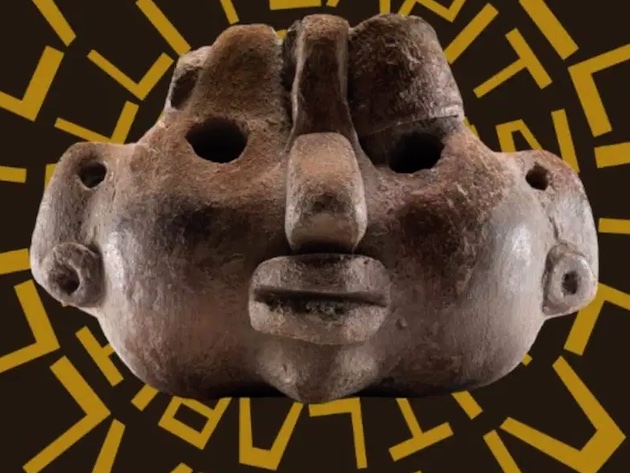
The exhibition Tlapitzalli. Rites and sounds of ancient Mexico at the Scuderie del Quirinale, which presents to the public a large collection of 163 artefacts from twenty museums in Mexico, has as its main objective to make the general public aware of the importance and peculiarity of pre-Hispanic peoples’ musical expressions.
In the exhibition, instruments, images, documents and sound reproductions are displayed, to allow visitors to understand aspects of the daily and ritual culture of the ancient peoples of Latin America. It is possible, in particular, to observe some examples of Tlapitzalli, the musical instrument similar to a flute, sacred to Tezcatlipoca, a pre-Columbian deity celebrated in the month of May at the end of the dry season, which was object of many studies by archaeologists and anthropologists and from which the exhibition takes its title.
For pre-Columbian civilizations the world was created by a set of deities who personified the sky, the earth, the water and all the other elements. The sound originated from an invisible force of nature: the wind. According to mythology, in fact, the gods gave the art of music to humanity, and for the Mesoamerican peoples, the concept of "music" also included the art of singing and dancing. To honor the divinities, these ancient populations began to build instruments that allowed them to connect the earthly world with the divine one: the sounds produced by the instruments, in fact, imitated those produced by the elements on Earth and its inhabitants. For this reason, the instruments depict realistic or mythological animals combined with flora and anthropomorphic elements. The musical element was in fact present in pre-Columbian civilizations in various everyday areas such as religion, war, hunting, health and domestic activities.
Thanks to archaeomusicological studies, some elements of ancient Mesoamerican music are known today; such as a melody performed simultaneously with different versions (heterophony); or interference between different frequencies (beats); or different sounds that form a harmony (polyphony); two or more simultaneous rhythms (polyrhythm); as well as the noise integrated into the musical language.
The exhibition is enriched with audio equipments which, thanks to the recordings of some songs performed for the occasion, offer the visitor an immersive experience among the sounds emitted by objects and musical instruments.
The exhibition, which was born from the collaboration between the Italian and Mexican Ministries of Culture, and is promoted by INAH, the National Institute of Anthropology and History of Latin America, in collaboration with the General Directorate of Museums, took advantage of the long work of a multidisciplinary scientific committee composed of musicologists, conservators, archaeologists, anthropologists, ethnologists and biologists.
Photo credits: Official poster of the exhibition
Informations
Dal 30 luglio al 15 settembre 2024
tutti i giorni dalle 09.00 alle 15.00
ultimo ingresso alle 0re 14.00
Durante tutto il periodo di apertura della mostra, è straordinariamente visitabile anche la Terrazza delle Scuderie affacciata sulla Piazza del Quirinale
 Condividi
Condividi











































